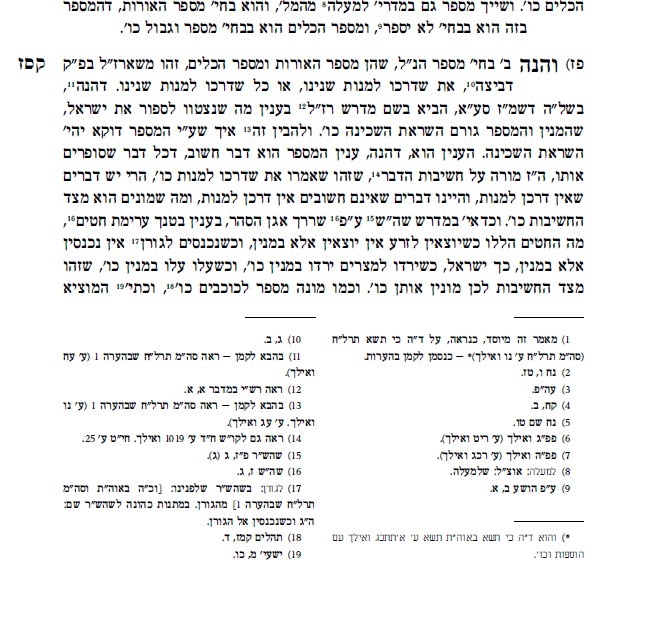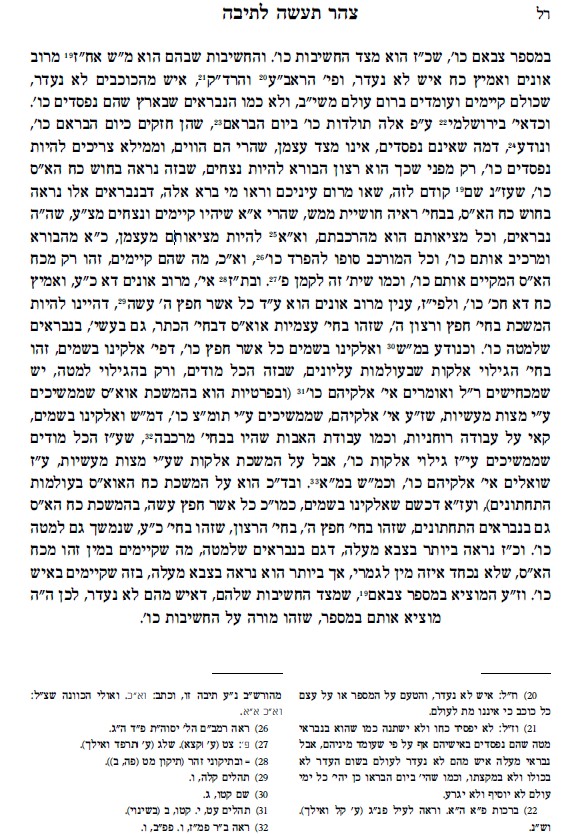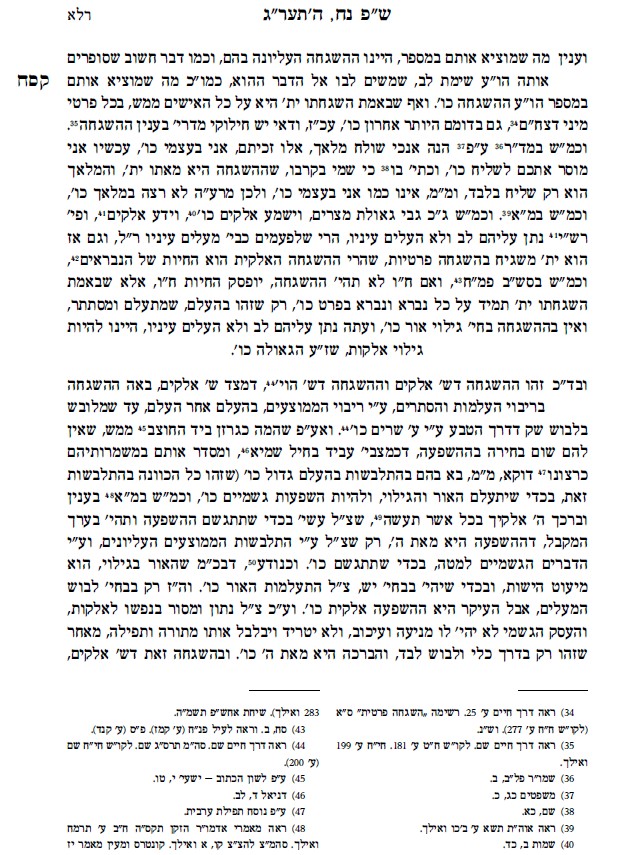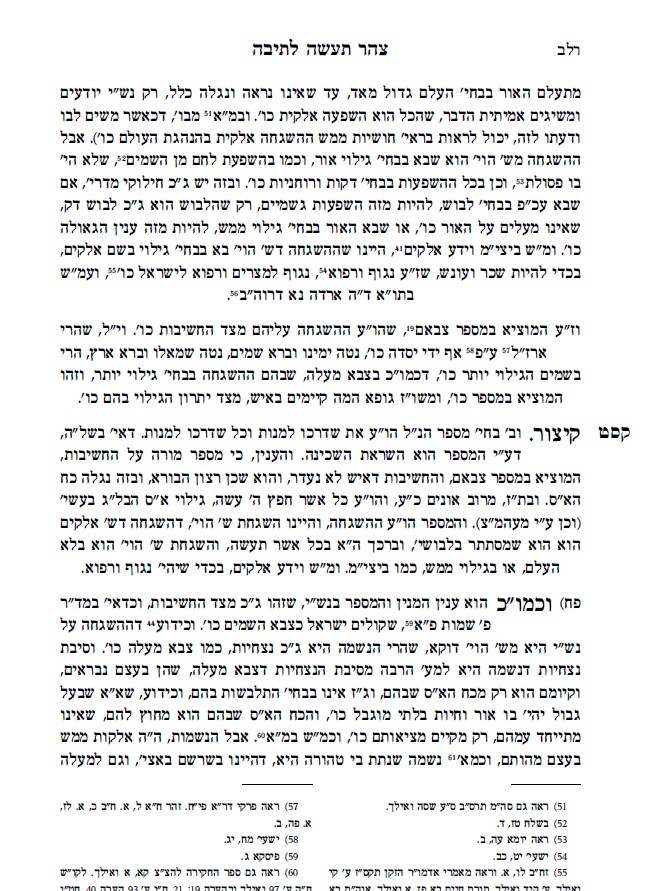AYIN BEIS | Existence Unplugged
Chapter 87: Why Do We Count? Number =Value
Long Summary
The difference between number of energies and number of containers explains the difference between “es she’darko limnos” (items which are always sold by count), and “kol she’darko limnos” (items which are generally sold by count but sometimes are sold by weight). Count demonstrates value. As the Shaloh writes regarding the counting of the Jews, which reflects the divine presence among them.
Explanation: Counting each individual item signifies that each item is valuable. Like the celestial bodies — counting the stars by their number, which is due to their value — that they perpetuate eternally (verse), due to the divine power vested in them. The earthly bodies also perpetuate but only by species, the divine in heaven revealed, the divine on earth concealed. Verse: xxx. Divine providence everywhere in every detail, but there are levels in this: providence from Havaya — revealed, redemption, and providence from Elokim, exile. Through garments which are necessary for the transmission to materialize in the material world, but the blessing comes from G-d. Celestial bodies have a revealed divine in each individual star — thus their individual count.
Hebrew Text




Sources
1) This discourse (chapters 87-90) — as well as the general preceding discussion on the nature of sefirah defined as number, (and also its other two definitions, sipur (narrative) and sapir (sapphire), beginning in chapter 83 and concluding with ch. 124) — is based on the Tzemech Tzedek’s discourse titled Ki Tisa (Ohr HaTorah Tisa p. 1823-1830), and its elaboration by the Rebbe MaHarash in his Ki Tisa 5638 series (Sefer HaMaamorim 5638 pp. 56) [where he begins (ch. 1) with explaining the census of Israel, moves into the meaning of sefirah as number and its other interpretations (sipur and sapir; he cites there a fourth meaning, sefer), number in containers and energies (ch. 1; 5), numbers of stars, souls, levels of hashgacha (ch. 2-4), the shaloh, “es she’darko limnos,” “kol she’darko limnos” (ch. 5)]. See also Ohr HaTorah Chayei Sarah 106b-107b (printed also in Biurei HaZohar pp. 70), which addresses sefirah from the word mispar and sippur (discuused later in chs. 91-94). [This discussion is a gloss on the discourse of Chayei Sarah 5566, where the primary focus is on sefirah from even sapir (brilliance)]. See sources for ch. 104.
More on this and on Ch. 89: Sefer HaChakira Aileh HaEidus 58b.
>> [Check: LT Shir Hashirim 46c. 40b and on. Acahrei 27a. OHT Beshalach 433. Torah Ohr Miketz 31d.] LT Balak Biur Mi Moneh 70a.
2) Seeing the infinite in the finite — Si’uh Morom (Samchuni) 5563 (pp. 268). Maamorei Admur HaEmtzoi Nach pp. 82. With the Tzemech Tzedek’s edits in Ohr HaTorah Shir HaShirim p. 213 (printed also Vayikra-Pesach p. 780). Sefer HaChakira p. 62a. 84b. 101b.
3) Number and beyond number, and their fusion: Vayitzavem, Vaeirah 5568 – with the Tzaemech Tzedek’s gloss: Ohr HaTorah Vaeirah pp. 146. 196. 217. 2894. Explanation: pp. 146. 210. At length – Vayitzavem 5638 (pp. 1). See also Vayitzavem 5627. 5628.
Ohr HaTorah Balak xxx. Tehilim pp. 571. Inyanim pp. 193.
Check: 5627 pp. 95. 5628 pp. 144. See 5664 p. 211. 5668 pp. 63. 5684 pp. 265. Pelach HaRimon pp. 53.
Olei Be’er, Balak 5564 p. 164 (cited in Ohr HaTorah Vaeirah p. 217. 5627; 2628 ibid).
4) Mi Monoh Balak — CHECK TBD
5) More on number and beyond number — a) Torah Ohr and related maamorim on Ant Hu Chad v’lo b’chushban. b) Chayei Sarah maamorim (me’ah v’esrim v’sheva etc.) – Maamorei Admur HaZakon 5566. Biurei HaZohar. Toras Chaim. Ohr HaTorah.
Number of sefirot that is beyond number because they are unified as a whole — see Ramaz Bamidbar xxx, cited in Ohr HaTorah Chayei Sarah (and Biurei HaZohar) in note #1. See also Ohr HaTorah Haazinu p. 1679-1680.

 Anchor
Anchor Breaker
Breaker Google Podcasts
Google Podcasts RadioPublic
RadioPublic Spotify
Spotify Pocket Casts
Pocket Casts